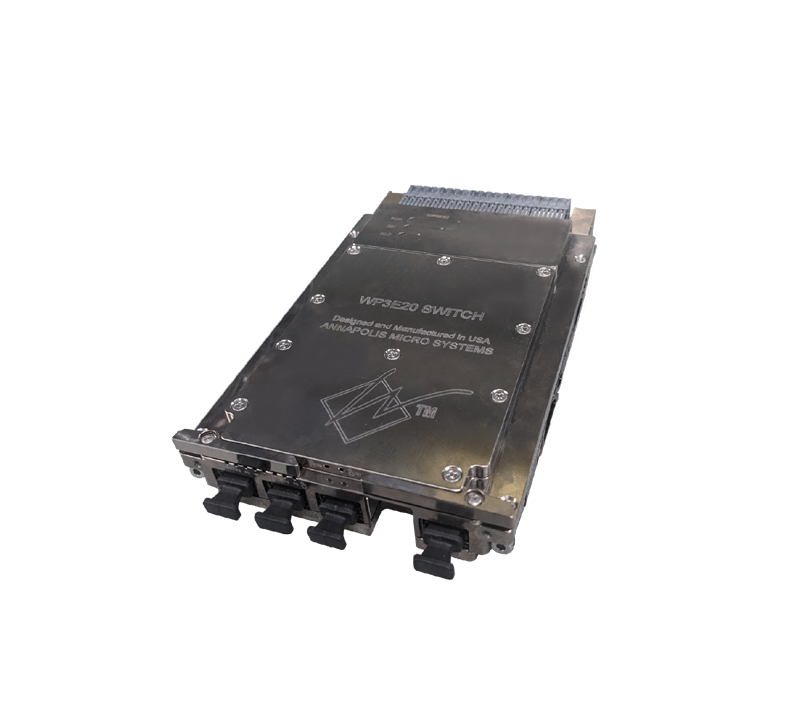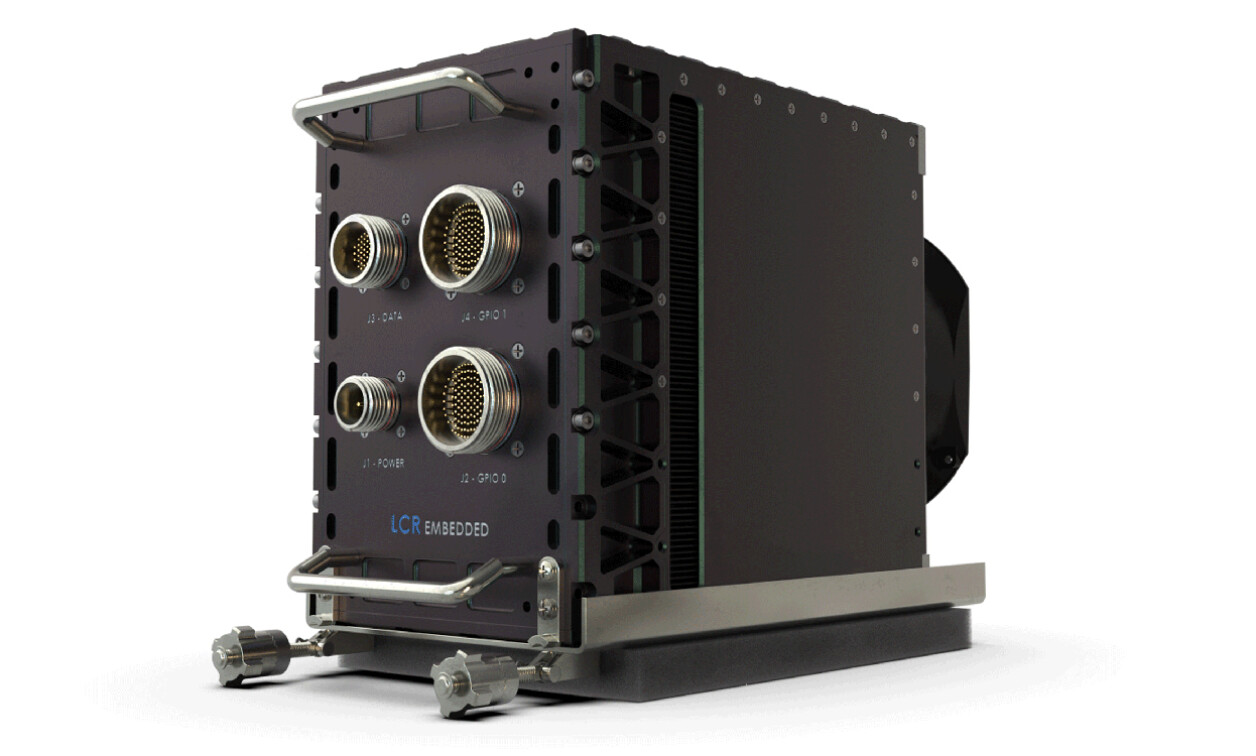Within recent years, the demand of increased bandwidth for radar applications and faster signal speed up to 6.25 Gbps[1] through the connector have led to the introduction of VPX as a successor to VME, which was first introduced in 1981. Later, VME was upgraded to the VME64 standard to cater to 64-bit computing. Recently, with the introduction of the VITA 46 standard in 2006, which describes the VPX bus, a step was made toward higher power levels. This increased the power from a maximum of 90 W at 5 V within the VME standard toward a maximum of 768 W per card at 48 V within the VPX standard[1]. These increased power levels forced the emphasis toward more advanced cooling technologies, as simple solid conduction was commonly seen as insufficient to keep components within their operating temperature limits. Therefore, in 2010, four parts of the new VITA 48 REDI (“Ruggedized Enhanced Design Implementation”) have been officially released. The four parts consist of a generic mechanical specification (ANSI/VITA 48.0-2010); cooling using air cooling (ANSI/VITA 48.1-2010); cooling using conduction cooling (ANSI/VITA 48.2-2010); and cooling using Air Flow-Through cooling (ANSI/VITA 48.5-2010)[2].
The absence of a released version of the liquid-cooled part of the VITA 48 standard (VITA 48.3)[3], where the cards themselves rather than the chassis are liquid cooled, limits the possibilities to enable higher component power levels without exceeding the maximum allowable component temperatures of typically +125 °C or lower. In particular, this becomes more significant when utilizing the larger 6U size with a maximum length of 233 mm and a maximum conducting distance from the middle of the conduction cold plate to the cooled side rails of 116.5 mm. An example of a typical conduction path from a component on the board to the cooled side rails is shown in Figure 1.
[]
The following discussion examines some concepts for effectively cooling VPX designs via increased base material conduction through the addition of: aluminum cold plates, Annealed Pyrolytic Graphite (APG) cold plates, or two-phase devices such as heat pipes.
Comparison of conduction-cooling technologies
As part of the development of the cold plates, an investigation using commercial CFD software, Ansys ICEPAK V12.0, was used to quantify the reduction in component temperature by changing the conduction-cooling concept. To compare each of the concepts in an equal way, all conduction cold plates have a length of 6U (233 mm) and the same heat source layout, with a total heat load of 305 W. This limit was chosen to be close to the maximum heat load allowed for the 12 V VPX case, which is 384 W.
In addition to using the same heat source layouts and power settings, the mesh settings within the CFD software were kept constant, so the cooling concept and its unique materials were the only parameters changed between each of the CFD runs conducted. All cold plates have a main conduction thickness of 4 mm. The graphite insert presented here has a thickness of 3 mm, and the heat pipe version has twenty-four 3 mm diameter heat pipes embedded into the cold plate. Both types were modeled to ensure optimal isothermalization of the entire surface to be cooled. For all simulations, the side walls (see heat output areas in Figure 1) are maintained at +70 °C. The technologies are mentioned in the order of their thermal performance and not to be seen as a qualitative judgment or judgment with regard to their suitability for particular applications.
Aluminum cold plates
Solid aluminum cold plates form the benchmark for this investigation, and their particular advantage lies with their relatively low price in comparison to other technologies mentioned here. Additionally, they can be machined into many shapes and, if required, holes can be added in nearly any location desired. However, their thermal performance is limited and therefore their use is restricted to lower-performance applications, excluding many airborne and military applications.
Annealed Pyrolytic Graphite (APG) cold plates
APG cold plates, such as Thermacore’s k-core cold plates, are advanced solid conduction cold plates and can be used in many applications, where weight and increased thermal performance are of significant importance. APG cold plates are based on aluminum encapsulated Annealed Pyrolytic Graphite and combine the mechanical strength and CTE of aluminum with the increased thermal conductivity and reduced weight of graphite.
Due to its lightweight construction, gravity independence, and freeze/thaw resilience, airborne and space-based applications have become the main applications for advanced solid conduction cold plates. As a result, these cold plates are flight qualified for use on aircraft and spacecraft. To ensure a long product life, particular care has to be taken during the design phase, as the addition of extra mechanical features such as holes added to an existing design needs to be considered early in the design phase.
Two-phase enhanced cold plates
Two-phase enhanced cold plates draw their increased thermal performance from heat conduction through the base material of the cold plate enhanced by the addition of two-phase devices such as heat pipes. Heat pipes typically have effective thermal conductivities that are significantly higher than the base metal. Their superior thermal conductivity is based on the two-phase cycle, where a working fluid, such as water or methanol, for example, is evaporated inside the heat pipe at one section, condensed at another, and transports a heat load through its vapor phase.
Description of results
Results of the analysis of all three cooling approaches with respect to thermal resistance are shown in Figure 2.
In Figure 2, the thermal resistances indicated were taken at the central heat source modeled in each of the technologies investigated, with solid aluminum being the benchmark cold plate on the right-hand side. Because of the increased thermal conductivity of the APG, approximately 1,100 W/mK when encapsulated in 6061-grade aluminum[4], a reduction of thermal resistance of 63 percent is achieved when compared to the baseline aluminum cold plate, which has a thermal conductivity of 200 W/mK[5] for 6063-grade aluminum. Heat pipes with their thermal conductivity easily exceeding 25,000 W/mK, can reduce the value for the thermal resistance even further. When 3 mm heat pipes are embedded into the conduction cold plates, the overall thermal resistance is reduced by 90 percent in comparison to the baseline aluminum cold plate. This leads to very low component temperatures when compared to the other two cooling approaches. It should be noted that while APG cold plates (400 g) prove to be lighter than solid aluminum baseline cold plates (430 g), the superior thermal performance of heat pipe cold plates comes with a weight penalty because of introduction of higher-density copper material (510 g) for the 6U size.
Higher conduction means lower component temperatures
Conduction cold plates with enhanced material conductivity such as Thermacore’s k-core APG and heat pipe cold plates in the VPX format can be used to design electronic systems with power levels above that possible with pure aluminum cold plates, but can still rely on conduction cooling rather than utilizing active systems such as forced air, convection, or liquid inside the chassis. Additional applications of APG cold plates can be found in areas where weight is an important issue, such as airborne and space applications.
References:
- GE Intelligent Platforms, “VPX: VMEbus for the 21st Century,” www.ge-ip.com, 2010.
- Interconnection World, “VPX REDI standard reaches ANSI/VITA ratification,” www.interconnectionworld.com/index/display/article-display/8336317115/articles/connector-specifier/standards/2010/december/vpx-redi_standard.html.
- VITA, “VME Technology Specifications,” www.vita.com/home/Specification/Specifications.html.
- Montesano, M.J., “Annealed Pyrolytic Graphite,” Advanced Materials & Processes, June 2006
- MatWeb, “Aluminum 6063-T6” www.matweb.com/search/DataSheet.aspx?MatGUID=333b3a557aeb49b2b17266558e5d0dc0&ckck=1.
Thermacore, Inc.
717-569-6551







